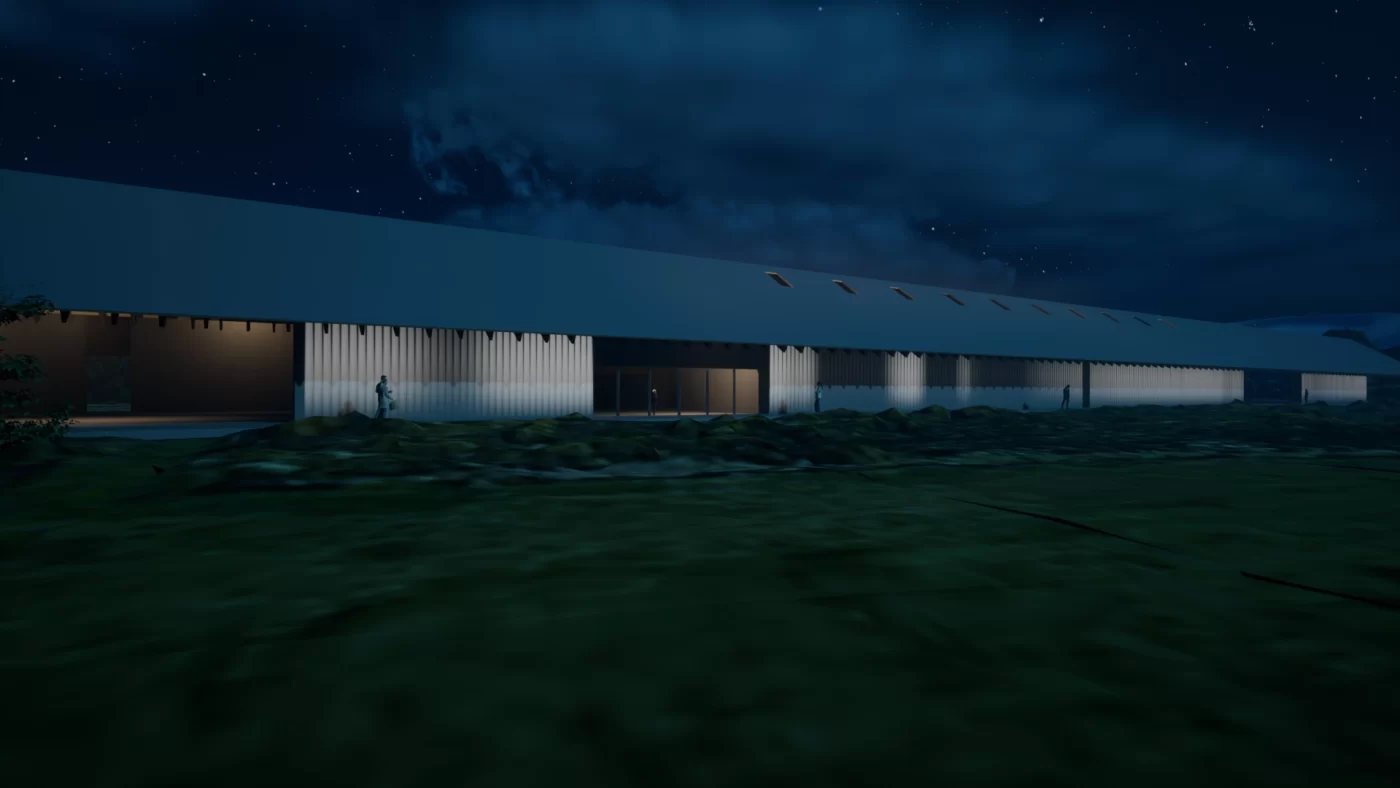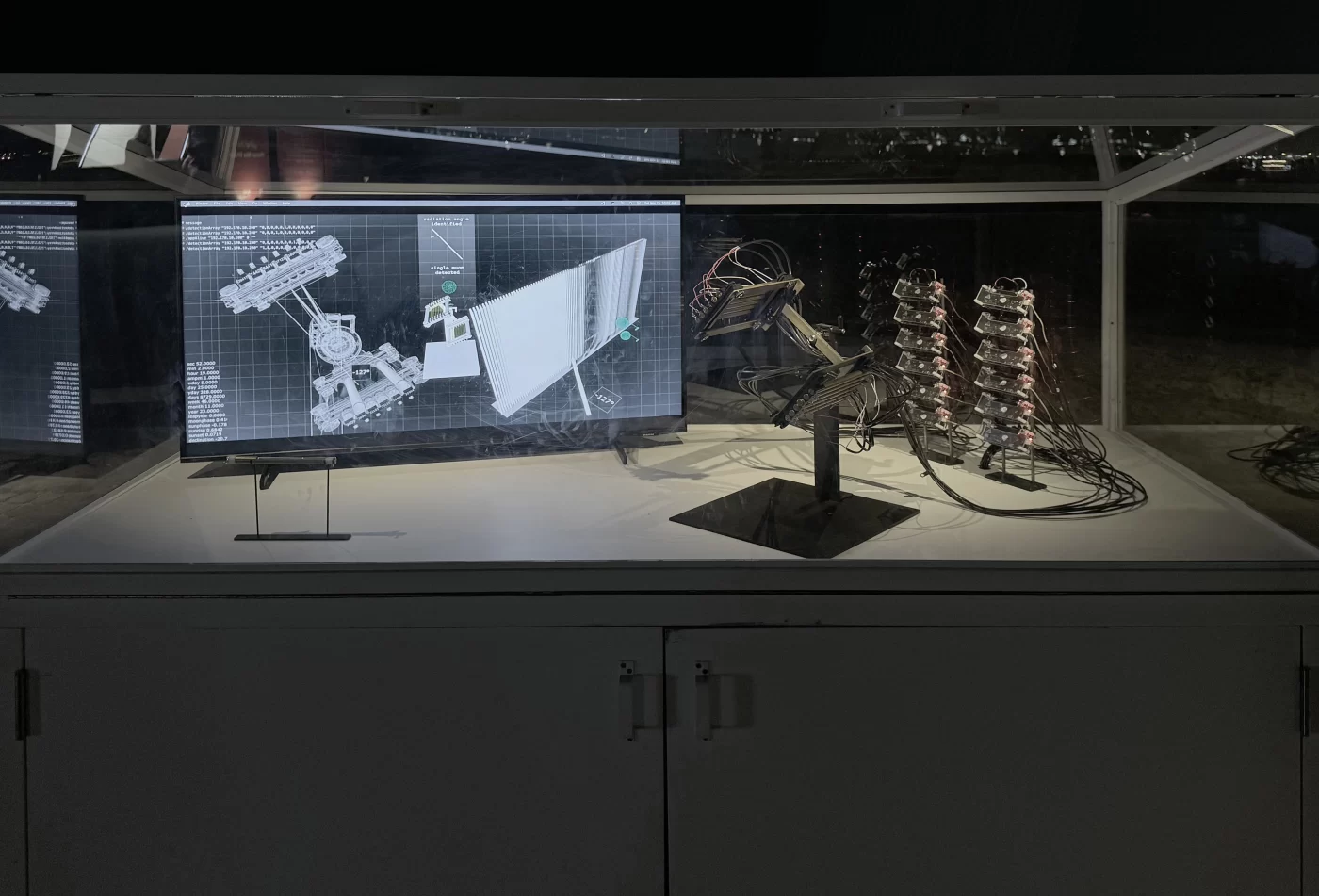The Parrish Art Museum will present Collider, a new public artwork by Rafael Lozano-Hemmer, as part of the annual façade installation series. Made up of hundreds of small LED spotlights that create a calm, rippling curtain of light along the Museum’s south wall, Collider will be visible from Montauk Highway and up close from the Museum’s meadow. The lights react in real-time to invisible cosmic radiation from outer space, originating from stars and black holes, detected by a custom-made muon detector installed at the Museum. Collider follows façade installations by JR, Hank Willis Thomas, Martin Creed, and Clifford Ross.
Rafael Lozano-Hemmer: Collider is organized by Corinne Erni, Lewis B. and Dorothy Cullman Chief Curator of Art and Education, with additional support from Kaitlin Halloran, Associate Curator and Publications Manager.
Exhibition Support
Rafael Lozano-Hemmer: Collider is made possible, in part, thanks to the generous support of The Rosenkranz Foundation; Sandy and Stephen Perlbinder; Bloomberg Philanthropies; Mex-Am Cultural Foundation, Inc.; Katherine Farley and Jerry Speyer; and Alexandra Stanton and Sam Natapoff.
We are also grateful to Antimodular Studio for their in-kind support.
The Parrish Art Museum’s programs are made possible, in part, by the New York State Council on the Arts with the support of Governor Kathy Hochul and the New York State Legislature, and by the property taxpayers from the Southampton School District and the Tuckahoe Common School District.

About Rafael Lozano-Hemmer
Rafael Lozano-Hemmer (b. Mexico City, 1967) is an artist working at the intersection of architecture and performance art, creating participatory artworks that utilize technology to facilitate human connection. After receiving his Bachelor of Science degree in physical chemistry from Concordia University in Montréal, Canada, Lozano-Hemmer’s early career in a molecular-recognition lab influenced his conceptual and practical approach to creating art. As early as the 1990s, Lozano-Hemmer worked with custom software and surveillance technologies to create interactive artwork. His work often invites viewers to provide a biometric “snapshot” of themselves—whether their fingerprint, heartbeat, or portrait—that the artist then transforms into a dynamic, collective landscape and representation of both anonymity and community. Technologically sophisticated yet deceptively simple in their execution, Lozano-Hemmer’s spectacular, immersive works are often installed in public places as a means of transforming these sites into forums for civic engagement.
Rafael Lozano-Hemmer was the first artist to officially represent Mexico at the Venice Biennale, with a monographic exhibition at Palazzo Soranzo Van Axel in 2007. He has also shown at Art Biennials and Triennials in Cuenca, Havana, Istanbul, Kochi, Liverpool, Melbourne NGV, Mercosul, Montréal, Moscow, New Orleans, New York ICP, Seville, Seoul, Shanghai, Singapore, Sydney, and Wuzhen. In the past few years, Lozano-Hemmer was the subject of eighteen solo exhibitions worldwide, including a major show at the Hirshhorn Museum in Washington, DC; the inaugural show at the AmorePacific Museum in Seoul; and a mid-career retrospective co-produced by the Musée d’Art Contemporain de Montréal, and SFMOMA. In 2019, his immersive performance “Atmospheric Memory” premiered at the Manchester International Festival, and his interactive installation “Border Tuner” connected people across the US-Mexico border using bridges of light controlled by the voices of participants in Ciudad Juárez, Chihuahua, and El Paso, Texas. Major recent solo exhibitions include “Listening Forest,” which featured his most extensive collection to date of outdoor works, installed over 120 acres of land at Crystal Bridges Museum of American Art in Bentonville, Arkansas; “Common Measures,” his first exhibition at PACE Gallery, New York; and “Translation Island,” a 2-km parcours which included ten public artworks, in Lulu Island, Abu Dhabi.
Lozano-Hemmer has received two BAFTA British Academy Awards for Interactive Art in London, a Golden Nica at Prix Ars Electronica in Austria, the Trophée des Lumières in Lyon, an International Bauhaus Award in Dessau, the Governor General’s Award in Canada, and was named Compagnon des Arts et des Lettres in Québec.



